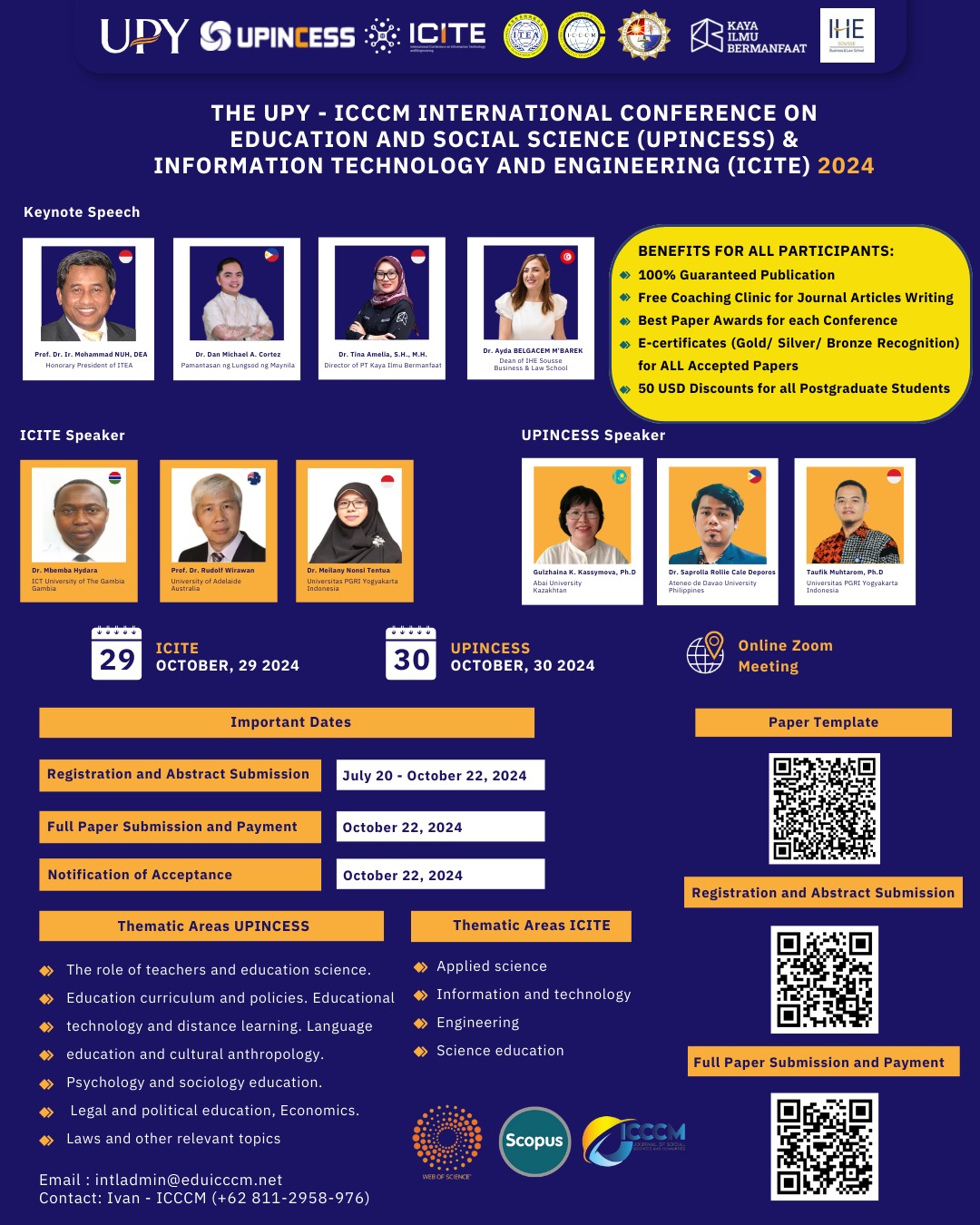Examining L2 Speaking Anxiety among Malaysian Undergraduates
DOI:
https://doi.org/10.53797/icccmjssh.v2i2.1.2023Keywords:
second language, language-skill-specific anxiety, speaking anxiety, language learning, undergraduatesAbstract
Feeling anxious or experiencing anxiety in the second language (L2) classroom is a common phenomenon among many L2 learners. Studies have found that anxiety can affect learners’ language learning process and performance in a negative way. Among the four language skills, the speaking skill which requires the learners to speak in the target language has been shown to be the most anxiety provoking among the learners. However, language-skill-specific anxiety such as speaking anxiety is relatively new compared to the well-known general foreign language anxiety. As such, there is a need to investigate it in the Malaysian context. To achieve that, 298 undergraduates at a Malaysian institution of higher education were involved in the study. A questionnaire was used to collect data from the participants. Statistical analysis indicated that the participants exhibited a moderate level of speaking anxiety. Also, there was a significant difference between the level of speaking anxiety between male and female. Finally, the number one cause of speaking anxiety among the participants was their perception of their competency in the target language.
Downloads
References
Abu-Rabia, S. (2004). Teachers’ role, learners’ gender difference and FL anxiety among seventh-grade students studying English as FL. Educational Psychology, 24, 711-729. http://dx.doi.org/10.1080/0144341042000263006
Aida, Y. (1994). Examination of Horwitz, Horwitz, Cope’s construct of foreign language anxiety: The case of students of Japanese. The Modern Language Journal, 78(2), 154-168.
Alnahidh, F. & Altalhab, S. (2020). The level and sources of foreign language speaking anxiety among Saudi EFL university students. Advances in Language and Literacy Studies, 11(1), 55-64.
Cheng, TS. (2002). Factors associated with foreign language writing anxiety. Foreign Language Annals, 35(5), 647-656.
Cheng, Y., Horwitz, E., & Schallert, D. (1999). Language anxiety differentiating writing and speaking components. Language Learning, 49, 417-446.
Chin, V., Ling, T. H., and Yih, Y. J. (2016). Investigating English language anxiety among UiTM Sarawak undergraduates. Journal of Creative Practices in Language Learning and Teaching (CPLT), 4(1), 50-62.
Elkhafaifi, H. (2005). Listening comprehension and anxiety in the Arabic language classroom. The Modern Language Journal, 89(2), 206-220.
He, D. (2017). How to cope with foreign language speaking anxiety effectively? The case of university students in China. Electronic Journal of Foreign Language Teaching, 14(2), 159-174.
Khouni, O., Gasim, A., Al-Fahdi, S., & Al-Naabi, E. (2022). Factors causing learners’ anxiety in FL speaking: The case of GFP learners at UTAS, Nizwa, Oman. English Language Teaching, 15(10), 108-117.
Horwitz, E. K., Horwitz, M. B., & Cope, J. (1986). Foreign language classroom anxiety. The Modern Language Journal, 70(2), 125-132.
Horwitz, E. K. (2001). Language anxiety and achievement. Annual Review of Applied Linguistics, 21, 112-126.
Inada, T. (2022). The causes of anxiety in highly anxious students in Japanese communicative EFL classes. English Language Teaching, 15(2), 1-8.
Krashen, S. (1985). The input hypothesis: Issues and implications. New York: Longman.
MacIntyre, P. D., & Gardner, R. C. (1994). The subtle effects of language anxiety on cognitive processing in the second language. Language Learning, 44, 283-305.
Matsuda, S. & Gobel, P. (2004). Anxiety and predictors of performance in the foreign language classroom. System, 32(1), 21-36.
Naudhani, M., Wu, Z., & Naudhani, S. (2018). Exploring the factors of foreign language anxiety among Chinese undergraduate English majors and non-English majors. International Journal of English Linguistics, 8(5), 142-150.
Piniel, K. & Zólyomi, A. (2002). Gender differences in foreign language classroom anxiety: Results of a meta-analysis. Studies in Second Language Learning and Teaching, 12(2), 173-203.
Quinto, E. J. M & Macayan, J. V. (2019). Exploring English speaking anxiety among Filipino engineering students: its influence on task performance and its sources. GEMA: Online Journal of Language Studies, 19(3), 57-74.
Saito, Y. & Samimy, K. K. (1996). Foreign language anxiety and language performance: A study of learner anxiety in beginning, intermediate, and advanced-level college students of Japanese. Foreign Language Annals, 30(3), 239-251.
Salikin, H. (2019). Factors affecting male and female Indonesian EFL students’ writing anxiety. Indonesian Journal of Applied Linguistics, 9, 316-323.
Scupin, R. (1997). The KJ method: A technique for analyzing data derived from Japanese ethnology. Human Organization, 56, 233-237.
Swain, M. (1985). Communicative competence: Some roles of comprehensible input and comprehensible output in its development. In S. Gass & C. Madden (Eds.), Input in second language acquisition, (235–253). Rowley, MA: Newbury House.
Swain, M. (2005). The output hypothesis: Theory and research. In E. Hinkel (Ed.), Handbook of research in second language teaching and learning (471-483). Yahweh, N.J: Lawrence Erlbaum Associates.
Yildiz, M. (2021). The factors causing English speaking anxiety on non-English major academics while using English as a medium of instruction. TEFLIN Journal, 32(2), 389-412.
Young, D. S. (1990). An investigation of students’ perspectives on anxiety and speaking. Foreign Language Annals, 23(6), 539-553.
Downloads
Published
How to Cite
Issue
Section
License
Copyright (c) 2023 Adi Afzal Ahmad, Rosna Awang Hashim

This work is licensed under a Creative Commons Attribution-NonCommercial-ShareAlike 4.0 International License.




